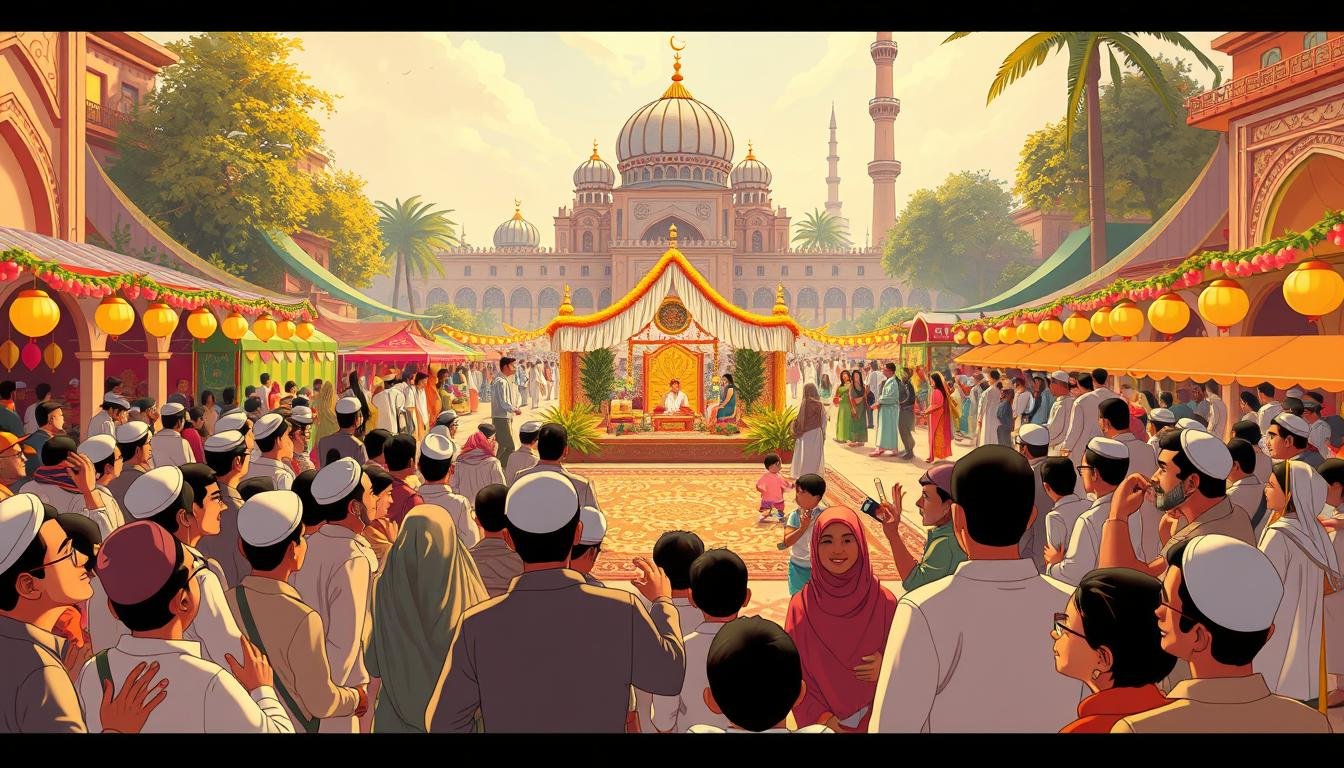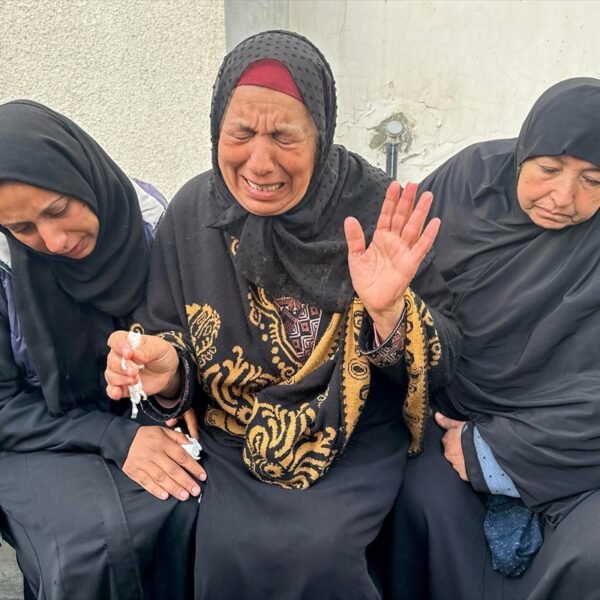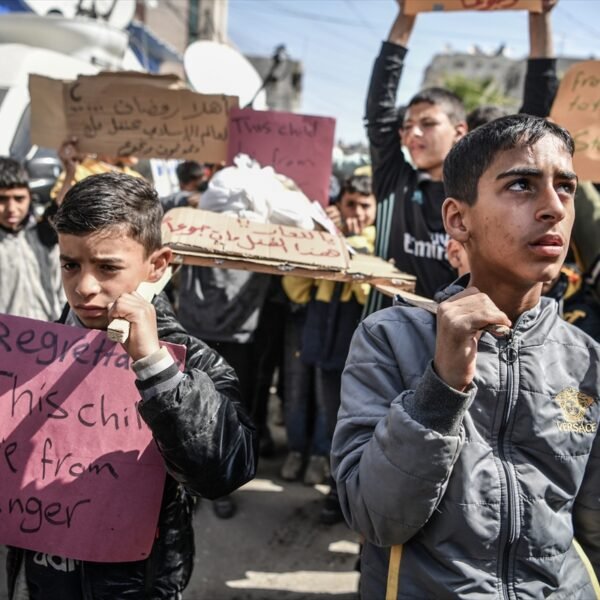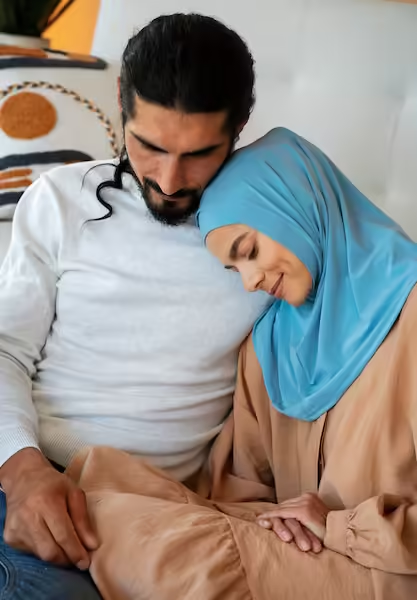Thinking about Eid ul Fitr makes me think of the Prophet’s ways. He showed us how to celebrate Eid. The first Eid al-Fitr was in the second year of Hijrah. It has been a key part of Islamic holidays ever after.
The Prophet wore his best clothes and used perfume. He also prayed with everyone together. Men, women, and children joined him.
Learning about the Prophet’s Eid traditions helps us understand its spiritual value. It teaches us about community and being thankful. His way of celebrating Eid shows us how to mix personal prayer with joyous sharing.
Whether we see Eid ul Fitr as a time for reflection or a chance to be with loved ones, the Prophet’s teachings guide us. They help us make our Eid celebrations meaningful and connect with others.
The Spiritual Significance of Eid in Islamic Tradition
Thinking about Eid in Islamic traditions makes me think of Ramadan. Eid’s spiritual meaning is deeply connected to Ramadan. During Ramadan, Muslims fast from dawn to sunset. They do this to grow spiritually and show devotion to Allah.
Fasting in Ramadan helps Muslims become more disciplined and caring. It reminds them of Allah’s blessings and mercy. When Ramadan ends, Muslims celebrate Eid ul Fitr with joy and gratitude. Eid is not just a celebration but also a reminder of important values, starting with
Eid teaches Muslims about the value of community and kindness. Giving Zakat ul Fitr, a form of charity, is a big part of Eid. It shows the importance of helping those in need. Eid reminds us to live with purpose, compassion, and devotion to Allah. We should follow Islamic traditions and the true spiritual significance of Eid every day.
Authentic Hadith about Eid ul Fitr from Sahih Collections
Exploring the authentic Hadith about Eid ul Fitr gives us insights into the Prophet’s traditions. The Sahih collections, like Sahih Muslim and Sahih Bukhari, offer a lot of information. They show us how the Prophet acted and taught during Eid ul Fitr.
These collections have 58 chapters, with Chapter 9 focusing on Eid Prayers. This helps us understand why following the Prophet’s example is so important.
The Hadiths highlight Eid ul Fitr’s significance, marking the end of Ramadan. The Prophet said fasting in Ramadan can forgive past sins. This shows how fasting in this month is key.
Looking at the Hadith, we learn about the Prophet’s actions. For example, he ate an odd number of dates before the Eid prayer. He also led a two-Rakat prayer without any extra prayers before or after.
By studying the Hadith in Sahih collections, we see the beauty of Islamic traditions. These traditions are just as relevant today as they were then. The Hadiths give us a special view of Eid ul Fitr’s cultural importance.
They remind us that Eid ul Fitr is a time for celebration. The saying “For every people there is a feast and this is our feast” captures its spirit. As we dive deeper into the Hadith, we learn more about following the Prophet’s example and Eid ul Fitr’s role in our faith.
The Prophet’s Morning Routine on Eid Day
Eid day is very special. It’s important to prepare spiritually and purify ourselves. The Prophet’s morning routine shows us how to start the day right.
He would begin with a ritual bath, or Ghusl. This act shows humility and devotion. It’s a way to approach the holiday with respect.
The morning of Eid day is key. It sets the stage for a day filled with meaning. By following the Prophet’s example, we can make our morning special.
The ritual bath, or Ghusl, is a big part of this. It cleanses us and brings renewal. Adding this to our morning can deepen our faith and connection with others.
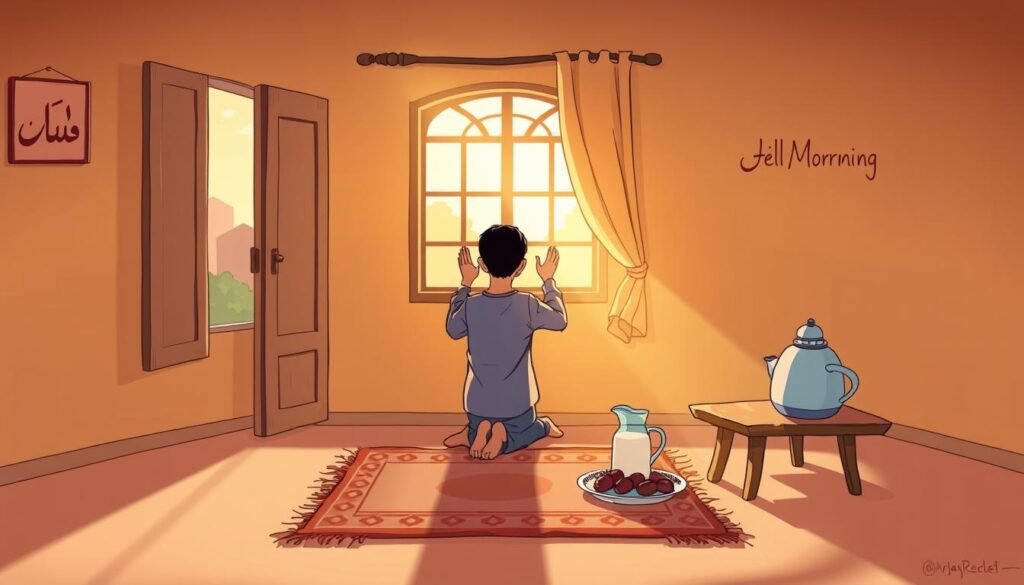
Let’s follow the Prophet’s lead on Eid day. We can make our morning meaningful and fulfilling. By focusing on purification, devotion, and community, we honor our faith and heritage.
Whether it’s a ritual bath, new clothes, or going to the prayer ground, we can reflect Eid day’s values. Our morning routine can be a powerful way to connect with our faith and community.
The Prophet’s Approach to Eid Prayer
Exploring the Prophet’s approach to Eid prayer helps us understand Eid’s significance. It shows us how important it is to follow the Prophet’s example. The Prophet’s way of praying during Eid teaches us about the beauty of Islamic worship.
The Eid prayer is an extra prayer added to the daily prayers. The Prophet would say “Allah is the Greatest” many times during it. This practice, called takbir, brings people together. For more on Islamic traditions, visit Muslim Culture Hub.
The Prophet also stressed the need for physical and spiritual cleanliness. He would perform ghusl (full-body ritual bath) before praying. This shows the importance of being clean and respectful during Eid.
Special Acts of Worship Performed by the Prophet on Eid
Reflecting on the Prophet’s Eid celebrations, we see he did special acts of worship. He showed the value of charity, devotion, and kindness. Giving Zakat ul Fitr was a key part of Eid for him.
He also made special prayers on Eid. These prayers are a big part of Eid. They help us thank Allah and ask for His blessings.
By doing these acts, like Zakat ul Fitr and special prayers, we learn about Eid’s true meaning. We grow in compassion and generosity. Let’s follow the Prophet’s example and make our Eid celebrations meaningful and spiritually rich.
The Social Aspects of the Prophet’s Eid Celebrations
Exploring the Prophet’s Eid celebrations helps us understand Eid’s importance. It shows how following the Prophet’s example is key. He valued community and social bonding, encouraging women of all ages to join Eid prayers.
Eid’s social aspects highlight the need for strong relationships and belonging. The Prophet showed us how to build a community. He taught us to share food and gifts, showing the value of community integrity.
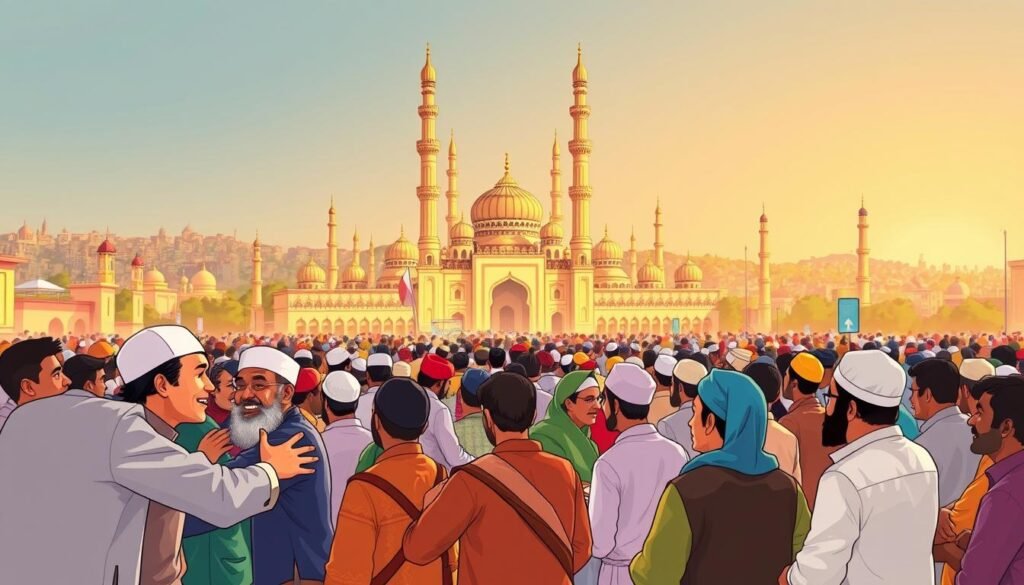
The Prophet’s Eid celebrations were simple and focused on spiritual growth. He taught us to meet often to strengthen bonds and avoid loneliness. As we celebrate Eid, let’s follow his example of kindness and generosity.
Prophetic Guidelines for Post-Eid Festivities
The Prophet Muhammad (SAW) taught us to be generous and kind during Eid. We should visit family and friends, share meals and gifts, and help those in need. This way, we show gratitude and get closer to Allah and each other.
The Prophet showed us how to celebrate Eid while helping others. He taught us about zakat and
Visiting Family and Friends
Visiting family and friends is important during Eid. It helps us feel connected and builds strong bonds. The Prophet Muhammad (SAW) said it’s a time to show love and kindness.
Sharing Meals and Gifts
Sharing meals and gifts is a big part of Eid. It shows our generosity and gratitude. The Prophet Muhammad (SAW) said it’s a way to strengthen our relationships.
Extending Charity to the Less Fortunate
Helping those in need is a big part of Eid. The Prophet Muhammad (SAW) taught us about zakat and sadaqah. By giving, we show we care about fairness and kindness.
Common Misconceptions About the Prophet’s Eid Practices
Exploring Eid’s significance, we must clear up common myths about the Prophet’s practices. We need to understand the difference between cultural traditions and the Prophet’s Sunnah. This helps us celebrate Eid in its true spirit, not misled by false beliefs.
It’s important to know what’s part of the Prophet’s Sunnah and what’s not. Cultural practices can make our celebrations richer. But, we must focus on the Prophet’s authentic practices to connect with Allah.
Historical mistakes also shape our views of the Prophet’s Eid practices. Correcting these errors helps us see the Prophet’s traditions more clearly. This way, we can celebrate Eid with a deeper connection to its true meaning, avoiding false beliefs and embracing the real Sunnah.
Embracing the Prophetic Legacy in Our Modern Eid Celebrations
As we end the Eid festivities, it’s key to hold onto the Prophetic legacy in our modern Eid celebrations. The Prophet Muhammad’s (peace be upon him) ways during Eid show us how to truly celebrate. They give us a timeless guide to connect with Eid’s spirit.
Participating in the Eid prayer together, helping those in need, and spending time with family are all important. These actions, inspired by the Prophet, carry deep spiritual meaning. By following these traditions, we keep Eid’s essence alive and strengthen our faith.
The Muslim world is growing, with about 1.9 billion people. Keeping the Prophetic legacy alive in our modern Eid celebrations is more important than ever. This way, Eid ul-Fitr stays meaningful, helping us connect with our faith and each other.
FAQ
What is the spiritual significance of Eid in Islamic tradition?
What do authentic Hadith reveal about Eid ul Fitr?
How did the Prophet start his day on Eid?
What was the Prophet’s approach to Eid prayer?
What special acts of worship did the Prophet perform on Eid?
How did the Prophet celebrate the social aspects of Eid?
What were the Prophetic guidelines for post-Eid festivities?
What are some common misconceptions about the Prophet’s Eid practices?
How can we embrace the Prophetic legacy in our modern Eid celebrations?
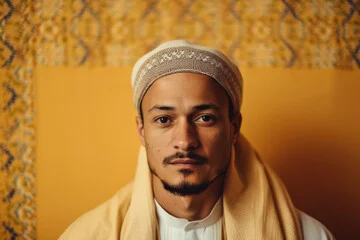
Embracing Faith, One Insight at a Time!
The teachings of the Quran have always guided my path. With a deep passion for Islamic knowledge, I strive to blend the wisdom of tradition with the relevance of today, making the timeless messages of Islam accessible and meaningful for everyone.
Muslim Culture Hub is my platform to share historical insights and thought-provoking articles, exploring both well-known and lesser-discussed aspects of Islamic culture and beliefs. My mission is to create an inclusive online space where everyone can learn, strengthen their faith, and connect with the profound message of Islam.
Join the journey!
May peace be upon you.

